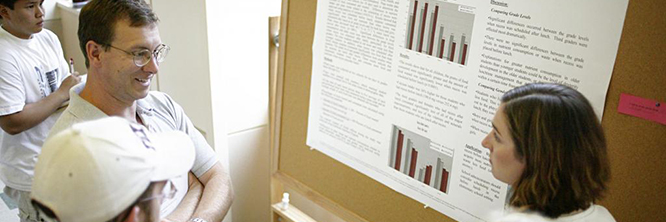Risk of Low Energy Availability, Disordered Eating, and Menstrual Dysfunction in Collegiate Female Runners
Document Type
Oral Presentation
Event Website
https://source2022.sched.com/
Start Date
18-5-2022
End Date
18-5-2022
Keywords
Low Energy Availability, Disordered Eating, Female Athletes
Abstract
Distance runners may be at risk for disordered eating (DE) habits and low energy availability (LEA) due to increased energy expenditure with or without decreased energy intake, which leads to negative health and performance outcomes, such as menstrual dysfunction. Purpose: This study investigated risk of DE, LEA, and estimated the prevalence of menstrual dysfunction (MD) among female collegiate runners. Methods: Female runners (n = 325) who compete on an NCAA Division I, II, or III cross-country and/or track team completed an online questionnaire (45 questions). This included the Low Energy Availability in Females Questionnaire (LEAF-Q) which examined incidence of stress fractures, occurrence and frequency of menstrual cycles within the previous 12 months, contraceptive use, and gastrointestinal function. The Disordered Eating Screening Assessment (DESA-6) was included to examine risk of DE. Runners with MD (oligomenorrhea and amenorrhea) were defined as reporting < 9 cycles within the previous 12 months. Those taking hormonal birth control were excluded from this analysis. Results: A high prevalence of athletes were at risk for LEA (56.6%), with 184 athletes scoring > 8 on the LEAF-Q. 42.5% were at risk for DE, and 13.2% of athletes reported menstrual dysfunction. Conclusion: Consistent with previous literature, a substantial percentage of athletes were found to be at risk for DE and LEA. These findings, along with a high prevalence of MD, demonstrate that collegiate female runners are at risk for health and performance consequences associated with LEA and DE.
Recommended Citation
Dambacher, Leah, "Risk of Low Energy Availability, Disordered Eating, and Menstrual Dysfunction in Collegiate Female Runners" (2022). Symposium Of University Research and Creative Expression (SOURCE). 15.
https://digitalcommons.cwu.edu/source/2022/CEPS/15
Department/Program
Food Science and Nutrition
Additional Mentoring Department
Food Science and Nutrition
Additional Mentoring Department
Exercise Science
Additional Mentoring Department
Graduate Studies
Risk of Low Energy Availability, Disordered Eating, and Menstrual Dysfunction in Collegiate Female Runners
Distance runners may be at risk for disordered eating (DE) habits and low energy availability (LEA) due to increased energy expenditure with or without decreased energy intake, which leads to negative health and performance outcomes, such as menstrual dysfunction. Purpose: This study investigated risk of DE, LEA, and estimated the prevalence of menstrual dysfunction (MD) among female collegiate runners. Methods: Female runners (n = 325) who compete on an NCAA Division I, II, or III cross-country and/or track team completed an online questionnaire (45 questions). This included the Low Energy Availability in Females Questionnaire (LEAF-Q) which examined incidence of stress fractures, occurrence and frequency of menstrual cycles within the previous 12 months, contraceptive use, and gastrointestinal function. The Disordered Eating Screening Assessment (DESA-6) was included to examine risk of DE. Runners with MD (oligomenorrhea and amenorrhea) were defined as reporting < 9 cycles within the previous 12 months. Those taking hormonal birth control were excluded from this analysis. Results: A high prevalence of athletes were at risk for LEA (56.6%), with 184 athletes scoring > 8 on the LEAF-Q. 42.5% were at risk for DE, and 13.2% of athletes reported menstrual dysfunction. Conclusion: Consistent with previous literature, a substantial percentage of athletes were found to be at risk for DE and LEA. These findings, along with a high prevalence of MD, demonstrate that collegiate female runners are at risk for health and performance consequences associated with LEA and DE.
https://digitalcommons.cwu.edu/source/2022/CEPS/15

Faculty Mentor(s)
Kelly Pritchett, Robert Pritchett